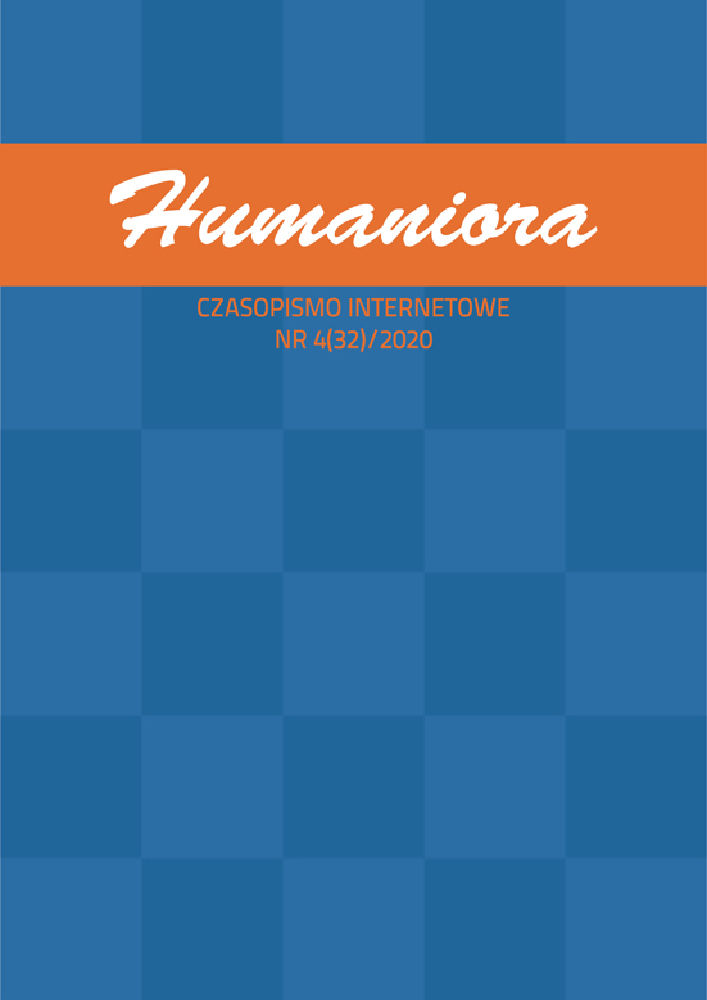Abstract
In the hazy anthropocene era, which M. Chaberski (2019) understood as a serious epistemological crisis, even wider than the climate crisis, visuality plays a very important role -it becomes a vector for visibility and invisibility of discursive and non-discursive practices. The spirit of new materialism has developed a number of concepts, which emphasized non-linguistic ways of shaping meanings and interpretations of reality, and at the same time appreciated non-humans agencies. The article is constructed around the thesis “visual is material,” because in the end every representation refers to the materials, on which our world is build. We can treat this thesis as a political statement, following J. Ranciere observations, that the thought is material (2007). We would like to analyze the significance of materiality by taking a look at media art practices. We can sink into the thicket of connections between materials and track the journey of things, not focusing on the final effect (manufactured item), but rather on manufacturing process (Ingold 2019; Deleuze, Guattari 2015).
References
Andrzejewski Ł., Zobaczyć to, co polityczne. Filozofia politycznej postrzegalności według Jacques’a Rancière’a, Universitas, Kraków 2019.
Bakke M., Bio-trasnfiguracje. Sztuka i estetyka posthumanizmu, Wydawnictwo Naukowe UAM, Poznań 2015.
Bal M., Wizualny esencjalizm i przedmiot kultury wizualnej, transl. M. Bryl, “Artium Quaestiones” 2006, no. XVII.
Chaberski M., Asamblaże, asamblaże. Doświadczenie w zamglonym antropocenie, Wydawnictwo Księgarnia Akademicka, Kraków 2019.
Deleuze G., Guattari F., Co to jest filozofia?, transl. P. Pieniążek, słowo/obraz terytoria Gdańsk 2000.
Ingold T., Splatając otwarty świat, transl. E. Klekot, Instytut Architektury, Kraków 2018.
Mirzoeff N., The Right to Look: A Counterhistory of Visuality, Duke University Press, Durham 2011.
Mitchell W.J.T., Cloning Terror. The War of Images, 9/11 to the Present, The University of Chicago Press, Chicago–London 2011.
Mitchell W.J.T., What do pictures want. The lives and loves of images, The University of Chicago Press, Chicago–London 2004.
Nacher A., The Techno-Ecological Practice as the Politics of Ontological Coalitions, “Acoustic Space” 2019, vol. 17.
Rancière J., Dzielenie postrzegalnego. Estetyka i polityka, transl. J. Sowa, Ha!art, Kraków.
Art works
Lelonek D., Center for the living things, www.dianalelonek.com/portfolio/center-for-the-living-things/.
Ploeger D., Smart Fence, www.daniploeger.org/smart-fence fbclid=IwAR25cffaxu5hMvjCtXqzOhnQlSobLX90snQ2tAy512rq_voD2noyvndm3Y.
Nogalski T., Green White Orange Composition,: www.vimeo.com/205680938?fbclid=IwAR1hx1Ng_p3sw40eQS26Wmg833_-EmAqoLCtxh5NpU58JY7u-2ky1vSfIeE.
Wysocka W., Where all problems end/ mupedzanhamo, dostępneprzez: www.weronikawysocka.com/photography/where-all-problems-end-mupedzanhamo/?fbclid=IwAR2vDAFQBa0yo5AB-uWu-ypb4YKscsJg-p4nqiAY5ojdHSMmBpPFiiIbOfk.
License
Czasopismo oraz wszystkie zamieszczone w nim materiały są powszechnie dostępne i mogą być wykorzystywane do celów naukowych, edukacyjnych, poznawczych i niekomercyjnych bez konieczności uzyskiwania każdorazowej zgody autorów i redakcji. Nadesłanie artykułu do publikacji traktowane jest jako zgoda autora na udostępnienie swojej pracy i informacji w niej zawartych do powyżej wymienionych celów. W takich przypadkach należy jedynie wskazać źródło, z którego zaczerpnięte zostały informacje. Pobieranie opłat za dostęp do materiałów zawartych w czasopiśmie lub ograniczanie do niego dostępu jest zabronione.
Przesyłane do redakcji teksty muszą stanowić oryginalne prace, uprzednio nigdzie niepublikowane ani nie przedkładane innym redakcjom lub wydawcom. Autorzy nadsyłanych artykułów ponoszą odpowiedzialność za uzyskanie zezwoleń na publikowanie materiałów, do których prawa autorskie są w posiadaniu osób trzecich. Publikacja materiałów chronionych prawem autorskim jest możliwa pod warunkiem uprzedniego dostarczenia przez autora do redakcji pisemnej zgody właściciela praw autorskich.





